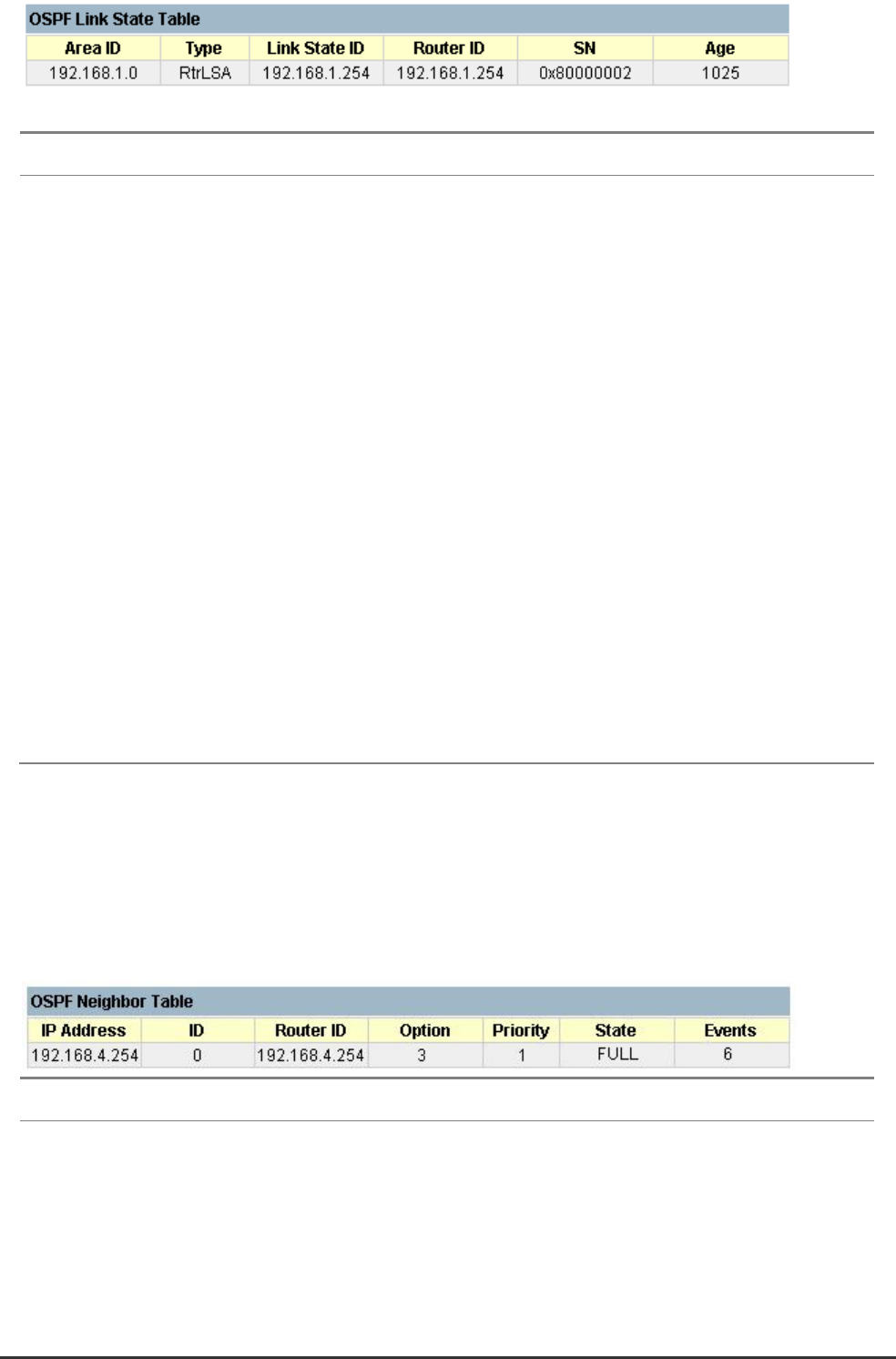Gigabit Ethernet Switch User's Manual
Table Of Contents
- Chapter 1. Introduction
- Chapter 2. Installing the Switch
- Chapter 3. Switch Management
- Chapter 4. Console Interface
- 4.1 Login Screen
- 4.2 Main Menu
- 4.3 System Information Menu
- 4.4 Management Setup Menu
- 4.5 Device Control Menu
- 4.5.1 Setting the System Operation Mode
- 4.5.2 Layer 2 Menu
- 4.5.3 Using the Bridge Menu
- 4.5.4 Configuring Virtual LANs
- 4.5.5 Configuring IGMP Snooping
- 4.5.6 Configuring IP Settings
- 4.5.7 Security Menu
- 4.5.8 Jumbo Packet Configuration
- 4.6 Monitoring the Switch
- 4.6.1 Displaying Port Statistics
- 4.6.2 Layer 2 Address Tables
- 4.6.3 Displaying Bridge Information
- 4.6.4 Displaying VLAN Information
- 4.6.5 IP Multicast Registration Table
- 4.6.6 IP Address Table
- 4.7 Resetting the System
- 4.8 Logging Off the System
- Chapter 5. Web Interface
- 5.1 Web-Based Configuration and Monitoring
- 5.2 Navigating the Web Browser Interface
- 5.3 Panel Display
- 5.4 Main Menu
- 5.5 System Information Menu
- 5.6 Management Setup Menu
- 5.7 Device Control Menu
- 5.7.1 Layer 2 Menu
- 5.7.2 Using the Bridge Menu
- 5.7.3 Configuring Virtual LANs
- 5.7.4 Configuring IGMP Snooping
- 5.7.5 Configuring IP Settings
- 5.7.6 Configuring Security Filters
- 5.7.7 Jumbo Packet Configuration
- 5.8 Monitoring the Switch
- 5.9 Resetting the System
- Chapter 6.Advanced Topics
- Appendix A Troubleshooting
- Appendix B Pin Assignments
- GLOSSARY

WGS3 Layer 3 Switch User’s Manual
- 223 -
Parameter Description
Area Identity An OSPF area identifier configured for a group of OSPF routers.
Type The link state advertisement type:
RtrLSA: Router LSA – All area routers advertise the state of links from the router
itself to the its local area.
NetLSA: Network LSA – The designated router for each area advertises the link
state for each transit area; i.e., an area with more than one attached router. This
LSA includes information about each router attached to the area, including the
designated router itself.
SumLSA: Summary LSA – Advertise the cost to a specific subnetwork outside
the router’s area, or the cost to a specific autonomous system boundary router.
ExtLSA: External LSA – Advertises link state information for each known
network outside the autonomous system.
Link State ID The identifier for the router originating this entry, usually in the form of an IP
address.
Router ID The IP address of the originating router.
Sequence No. The link state sequence number, used to remove previous duplicate LSAs.
Age The number of seconds since this LSA was originated.
5.8.6.5.3 Displaying the Neighbor Table
Each router exchanges link state information with all neighbors physically attached to the same network
segment. This table displays a summary of the link state for all adjacent neighbors. (Note that
neighboring routers are discovered by this device via Hello messages.).
Parameter Description
IP Address IP address of the neighboring router
ID The index number of the router interface to which this neighbor is attached. For
IP protocol, this value will always be zero.
Router ID The OSPF identifier for the neighboring router.










